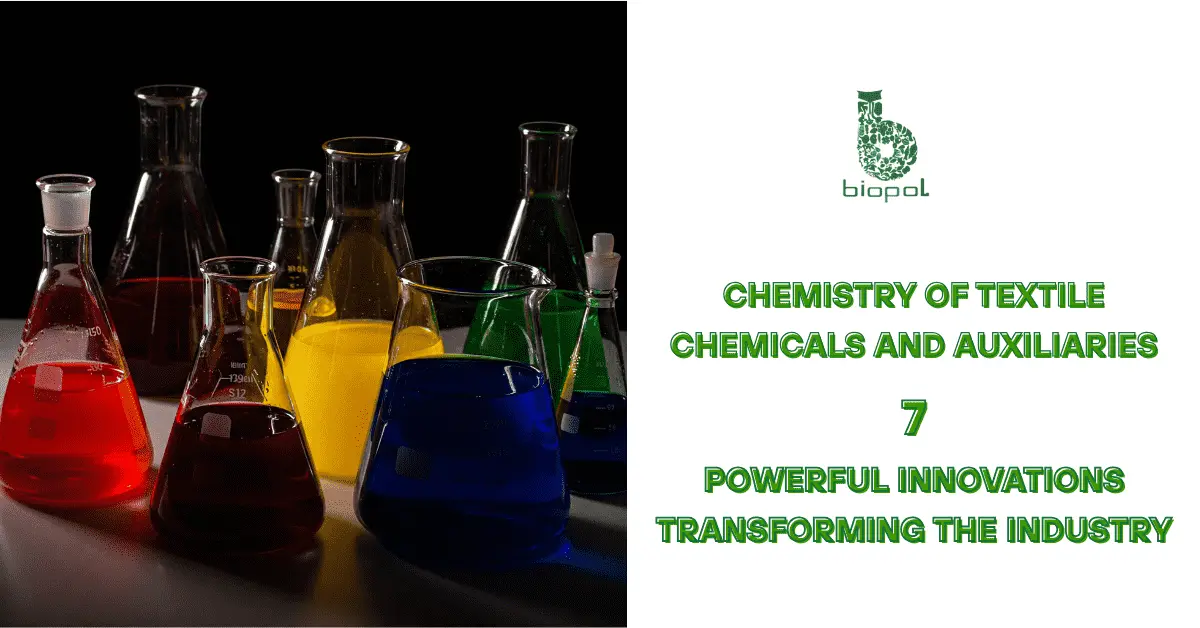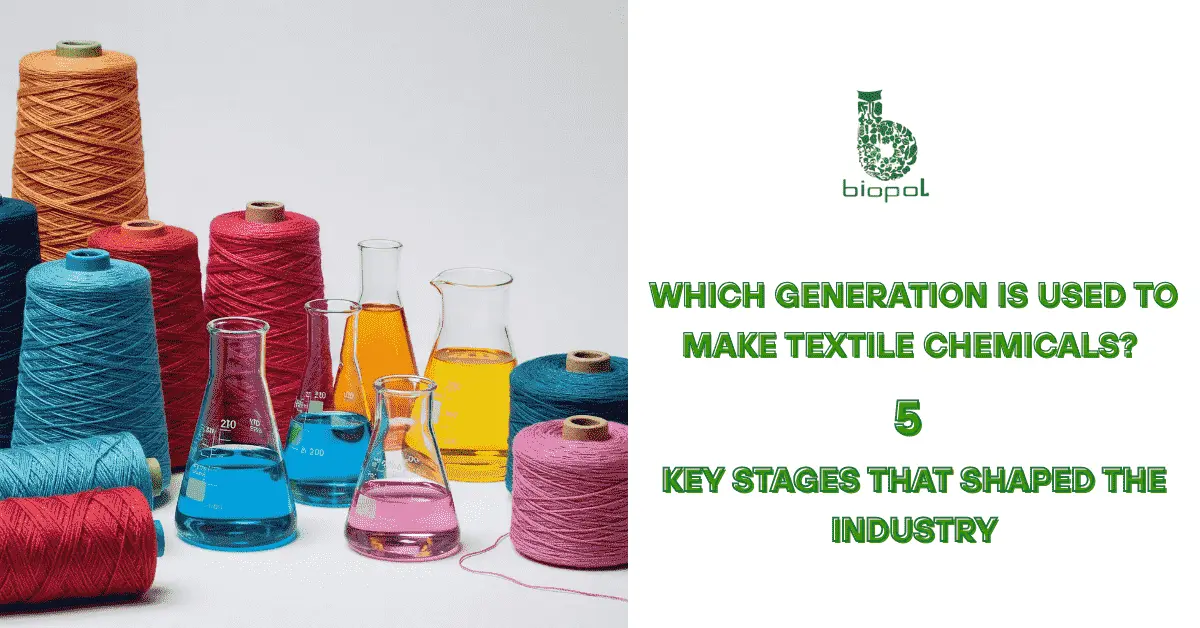
Which generation is used to make textile chemicals today depends on how far the industry has progressed from its origins. From basic synthetics to advanced, sustainable solutions, each generation marks a shift in performance, safety, and environmental responsibility—reshaping the way textiles are treated, finished, and manufactured.
Table of Contents
Textile Chemicals: A Generational Shift
The evolution of textile chemicals has been marked by significant generational shifts, each contributing to advancements in performance, sustainability, and safety. So, which generation is used to make textile chemicals today? The early generations were characterized by basic synthetic compounds focused on mass production, often ignoring environmental considerations. However, as global awareness grew, the industry shifted towards cleaner, more sustainable chemical solutions. Modern generations now focus on innovation, using nanotechnology, biotechnology, and eco-friendly practices to improve textile functionality while minimizing environmental impact. This generational shift is revolutionizing the textile industry, ensuring a greener future.
First to Third Gen: Building the Foundation
The transition from first to third-generation textile chemicals created the building blocks for today’s innovative solutions. Here’s a breakdown of the key stages:
| Generation | Focus | Strengths | Limitations |
| First Generation | Basic synthetic fibers (e.g., polyester, nylon) | Low-cost production, mass availability | Limited durability, environmental concerns |
| Second Generation | Performance enhancements (e.g., water resistance, fabric strength) | Improved fabric functionality | Still environmentally harmful, not fully sustainable |
| Third Generation | Sustainability and performance balance | Safer, more efficient chemicals | Challenges in achieving full sustainability |
In earlier generations, foundational processes often involved basic chemical treatments, including the use of caustic soda in textile chemicals for fiber preparation and cleaning—though sustainability was not yet a priority.
Fourth Gen: Smarter, Greener Solutions
The fourth generation of textile chemicals represents a monumental leap toward smarter, more sustainable solutions. This era is defined by the integration of advanced technologies like nanotechnology, automation, and eco-friendly chemistries. Here’s how each component plays a crucial role:
- Nanotechnology: This technology enables the creation of ultra-thin coatings that enhance fabric properties, such as water resistance, durability, and stain resistance, without compromising the environment.
- Automation: Automation in manufacturing processes reduces waste, increases precision, and improves overall efficiency, resulting in lower resource consumption.
- Eco-Friendly Chemistries: Sustainable chemical formulations, like water-based dyes and biodegradable finishes, ensure that textile production has minimal environmental impact.
The fourth generation balances high performance with environmental responsibility, making textiles smarter, greener, and more efficient. This generation continues to push the boundaries of what’s possible in textile chemistry.
Fifth Gen: Biotech and Circular Innovation
The fifth generation of textile chemicals ushers in a new era dominated by biotechnology and circular manufacturing systems, both of which are redefining sustainability in the industry. At the heart of this generation are biosourced chemicals and closed-loop systems.
- Biosourced Chemicals: These are chemicals derived from renewable resources like plants, algae, or fungi, replacing traditional petrochemical-based ingredients. They offer a more sustainable alternative, reducing dependence on fossil fuels and minimizing environmental harm.
- Closed-Loop Manufacturing: This system focuses on recycling materials within the production process, reducing waste and ensuring that chemicals used in textile manufacturing are reused and repurposed. The goal is to create a sustainable cycle where nothing goes to waste.
Fifth-generation technologies represent a major leap toward truly circular and eco-friendly textile manufacturing, demonstrating how the industry can meet performance demands while promoting environmental responsibility.
Which Gen Leads Today’s Market?
In today’s textile industry, the third and fourth generations are the dominant forces shaping chemical usage, with a noticeable shift toward eco-conscious and high-performance solutions. While the third generation laid the foundation for safer, more efficient chemicals, the fourth generation now leads the market due to its integration of nanotechnology, automation, and sustainable practices.
Key factors driving the fourth generation’s dominance include:
- Environmental regulations that demand greener solutions.
- Consumer demand for more sustainable and functional textiles.
- Technological advancements in automation and nanotechnology, which improve production efficiency and textile performance.
This generation strikes a balance between performance and sustainability, making it the preferred choice for manufacturers aiming to meet both industrial and environmental standards.
Choosing the Right Gen for Your Needs Selecting the right generation of textile chemicals requires balancing performance with compliance to meet both industry and environmental standards. Here’s how to match the right generation to specific needs:
- First to Third Generations: Ideal for cost-effective, basic applications where advanced performance is not a top priority. While they provide mass production options, they often fall short of modern sustainability standards.
- Fourth Generation: Best for manufacturers seeking high performance with eco-friendly solutions. The integration of nanotechnology and sustainable chemicals provides functional textiles with reduced environmental impact.
- Fifth Generation: For those prioritizing sustainability, biosourced chemicals and closed-loop systems offer eco-friendly, cutting-edge solutions with long-term environmental benefits.
FAQs
What are the chemicals used in textile manufacturing?
Dyes, softeners, surfactants, bleaches, enzymes, flame retardants, and fixatives.
What is textile chemical processing?
It refers to applying chemicals during pretreatment, dyeing, printing, and finishing of textiles.
What are the chemical products of the textile industry?
Finished fabrics with added properties like colorfastness, softness, water resistance, or antimicrobial features.
which generation is used to make textile chemicals?
The fourth generation is primarily used today—featuring nanotechnology, automation, and eco-friendly chemistries—while the fifth generation with biotech and circular systems is emerging.

